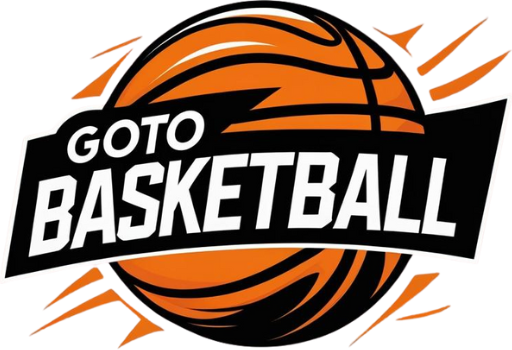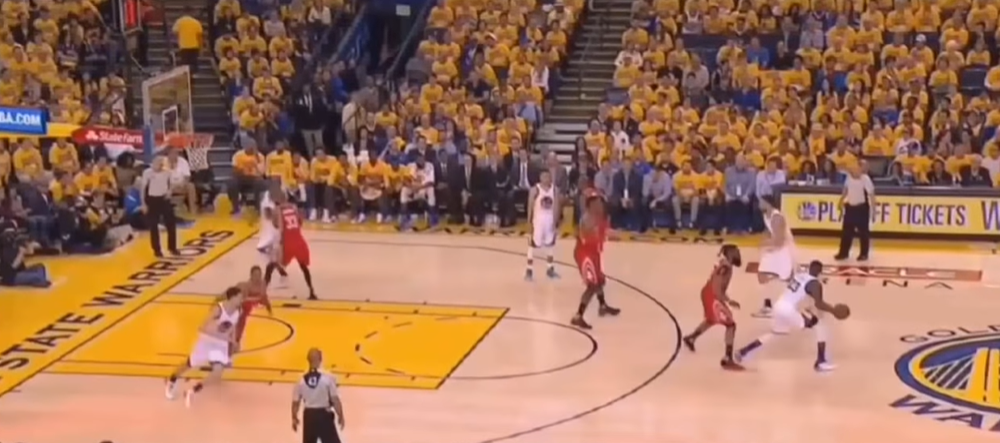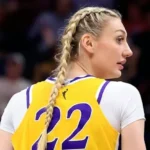Innovation and tradition are two factors that are considered at a crossroads in the A League.
The NBA is the most prestigious basketball league in the world and is currently booming with a new TV rights contract worth 76 billion, whose benefit is going to come to the current season. All the arenas emanate power, the old greats are continuing their primes, and competitive rivalry creates a real buzz on the premises of winning titles. And lurking behind this gilded facade is the set of ancient regulations that grow further and further out of touch with a contemporary game.
- Innovation and tradition are two factors that are considered at a crossroads in the A League.
- 1. The Draft Timing Fiasco: Fixing Basketball’s Most Embarrassing Tradition
- Learning from Recent History
- 2. The Stepien Rule: When Protection Becomes Restriction
- A Contemporary Fear As Opposed to a Historical One
- The Path to Reform
- 3. The Rose Rule Paradox: Punishing Success
- The Unintended Consequences
- A Practical Solution
- 4. Free Agency’s Identity Crisis: From Spectacle to Bureaucratic Maze
- The Anticlimactic Reality
- Reimagining the Free Agency Experience
- 5. Geographic Diversity: Bringing Basketball to Every Corner of America
- Learning from NFL Innovation
- Practical Benefits of Geographic Rotation
- Historical Context: How We Got Here
- The Evolution of NBA Governance
- The Rose Rule’s Unintended Evolution
- Economic and Competitive Implications
- The Reform Imperative: Why Change Cannot Wait
- Competitive Balance in the Analytics Age
- Implementation Pathways and Political Realities
- Timeframe and Benchmarking Policies
- Looking Forward: The NBA’s Regulatory Future
- The Broader Implications
These regulations are more than four decades old, and their influence persists in league operations in spite of significant changes in the quality of ownership, financial sophistication, and competitive philosophy. Although the current collective bargaining agreement doesn’t expire until after the 2029-30 campaign (with an option of mutual opt-out after 2028-29), the following five changes must already be discussed.
It is the moment of structural changes to the rules that recognize that the NBA is now very different than in its inception, when it was in the bad days of incompetent ownership and financial instability that would have justified the introduction of these protective measures.
1. The Draft Timing Fiasco: Fixing Basketball’s Most Embarrassing Tradition
When Celebration Becomes Humiliation
We experience it yearly. What should be a player’s first impression of the NBA is actually ruined at times due to a trade that we all hear about but can not be made official until the start of the new league year. The visuals have become agonizingly routine as the young men are scrambling, confused about what to put on and hold, trying to wear hats with the team logos they will never play on, preparing an absurd theatre of the ridiculous of the greatest moment in their entire basketball life.
Taking into consideration the historical precedent, and resulted in perpetual cringing, such as Kobe Bryant in a Charlotte Hornets uniform or Luka Dončić in an Atlanta Hawks cap. We got witness to such an incident this summer when Phoenix Suns rookie center Khaman Maluach was originally made to wear a Houston Rockets cap despite the pick having been traded off in a deal not only three days earlier but also as part of the Kevin Durant package.
Not only do these scenes produce uncomfortable photography, but they are factually incorrect in that they distort basketball history. Formally, back in 2018, the Dallas Mavericks chose Trae Young and not Dončić. The Golden State Warriors have been credited with having drafted Vince Carter in 1998. In 1993, the Orlando Magic unaccountably picked Chris Webber at No.1. These historical inaccuracies serve to confuse the historical record due to historians of basketball later on in the future, and the meaning of draft-day trades that transform franchise directions.
The Easy Fix
The solution to this humiliation cannot be simpler. The new league year is actually July 6, but the draft occurs in late June each year. The easiest thing to do would be to change to date of the draft to July, following the new league year, and all trades would effectively be announced as soon as they are accepted.
This timing variation would also get rid of the waiting time that makes a traveller anticipate and feel deflated. Players would know their actual destinations immediately, teams could announce their acquisitions without legal complications, and fans could celebrate or commiserate based on reality rather than procedural technicalities.
Learning from Recent History
The trade difficulties are compounded further by the fact that the window between the championship celebrations/awards and the draft selection is so tight. It was on June 22 that the Oklahoma City Thunder won the 2025 Finals. This was the case, such that only two days were left between the last day of actual basketball and the draft, which is on June 25. There is no surprise that in the first round, the viewership declined by 14.5 percent.
Such scheduling has made an ideal storm of loss of interest and saturation. Fans require time to digest the results of the championship and direct them to further opportunities. The timeline under consideration is ineffective in building up anticipation or performing a strategic analysis of the draft interest.
2. The Stepien Rule: When Protection Becomes Restriction
A Rule Born from Chaos
The regulation that bears Ted Stepien’s name perhaps has a more colorful origin story than any other NBA regulation. His time as an owner of the Cavs was highly controversial, and his decisions led to numerous coaching changes and poor performances of the team, and to the NBA establishing what is known as the Ted Stepien rule to limit how teams can trade their draft picks.
Stepien was the owner of the Cavs in his early 1980s, and traded a lot, making the franchise devoid of first-round picks in a few years. His ineptitude was legendary-at one point, he traded away five consecutive first-round picks, including a pick that became the first pick overall in 1982, which resulted in the Los Angeles Lakers getting future Hall of Famer James Worthy.
The involvement of the NBA was first of its kind, and quite essential. In 1983, when he sold the Cavaliers, the NBA established the so-called Stepien Rule, according to which the team cannot skip two consecutive drafts in the first round. This was vital security against the incompetence of ownership that jeopardised the franchise.
A Contemporary Fear As Opposed to a Historical One
The NBA of today is in a totally different world from the anarchic early 1980s that warranted the existence of the Stepien Rule. Two contemporary owners would have been vetted exhaustively, ensured they had in-depth analytical departments, and would have been operating within financial structures that would have prevented a Stepien-style mismanagement of the franchise.
All in all, the Stepien rule does not allow NBA teams to enter any transaction such that they will lack first-round selections in any two drafts occurring consecutively, whatever the situation and whatever the reason. This is no longer sensible, as on the one hand, it was created to stop disastrous mismanagement, and on the other hand, it is a restriction of legitimate strategic decision-making.
The NFL’s approach provides a compelling alternative model. Professional football teams can trade consecutive first-round picks without league intervention, trusting that modern ownership and management standards provide sufficient protection against poor decision-making. The Los Angeles Rams’ consecutive first-round pick trades for Matthew Stafford demonstrate how this flexibility can benefit both teams involved in major transactions.
The Path to Reform
The Stepien Rule is in the NBA’s bylaws, which can be changed by a vote of the Board of Governors and does not require CBA negotiation. This administrative simplicity means reform could happen relatively quickly if ownership groups recognize the rule’s limitations.
A modernized approach might adopt the NFL’s three-year trade window while eliminating consecutive pick restrictions. This would provide teams with strategic flexibility while maintaining reasonable limitations on long-term asset disposal. The current system’s inflexibility prevents legitimate win-now strategies that could benefit both competing teams and overall league competitiveness.
3. The Rose Rule Paradox: Punishing Success
When Achievement Becomes Penalty
The Derrick Rose Rule represents one of the NBA’s most well-intentioned regulations that produces unintended negative consequences. This renewal will initially bring him 30% of the salary cap, instead of the aforementioned 25% applied to this type of player. The requirements for this are to achieve at least one of these merits: Having won the NBA MVP. Having been chosen twice for an All-NBA Team.
Recent examples illustrate the rule’s problematic impact on team building. Mobley won Defensive Player of the Year for the Cleveland Cavaliers, while Cade Cunningham of the Detroit Pistons was named to the All-NBA Third team. This means a huge boost in salary for both, as the previous five–year, $224 million contracts they agreed to (at 25 percent of the cap) now jump to $269 million (30 percent).
The Unintended Consequences
What should represent celebration for player achievement and smart drafting instead creates financial chaos for responsible franchises. The Cavs are over the second apron, meaning this $8 million increase for Mobley will actually cost them tens of millions in extra luxury tax penalties. This penalty structure fundamentally contradicts the NBA’s stated goals of rewarding player development and franchise competence.
The current system creates perverse incentives where teams might actually prefer their young stars to underachieve slightly to avoid salary cap complications. This contradicts basic competitive principles and punishes the very behavior—successful player development—that creates compelling basketball and fan engagement.
A Practical Solution
Quite simply, players should still get their bonus paid out over the same number of years without it affecting the team’s salary cap. Mobley and Cunningham should both see their cap hits at $38.6 million this season instead of $46.4 million, while getting the difference paid out by the owners without it affecting the cap.
This approach satisfies multiple constituencies simultaneously. Players receive the financial recognition their achievements deserve, teams avoid punitive luxury tax implications for successful development, and the competitive balance that salary caps are designed to maintain remains intact.
4. Free Agency’s Identity Crisis: From Spectacle to Bureaucratic Maze
The Lost Magic of July
Free agency used to be one of the most exciting times of the NBA calendar. We’d get Woj bombs all throughout the night and saw stars like LeBron James, Kevin Durant, Kawhi Leonard, Kyrie Irving, Dwight Howard, and others all dominate headlines for months in anticipation of where they might sign.
The current system has transformed this once-electric period into a confusing bureaucratic process that frustrates fans and diminishes excitement. NBA free agency officially began on July 6 this year. Actually, players and teams could agree to contracts at 6:00 pm ET on June 30. OK, technically, franchises could begin negotiating with their own free agents the day after the end of the NBA Finals.
The Anticlimactic Reality
Now, free agency has become a long, drawn-out process that has zapped the fun out of what was formerly a highlight of the NBA year. Our biggest piece of news on Day 1 was a Jaren Jackson Jr. extension with the Memphis Grizzlies. By Day 3, players like Eric Gordon and Spencer Dinwiddie signing veteran minimum deals were among the biggest headlines.
This extended timeline creates an anticlimatic experience that fails to capture public attention or generate the sustained excitement that benefits all stakeholders. The moratorium period, designed to provide legal protection, instead creates confusion and delays that reduce rather than enhance fan engagement.
Reimagining the Free Agency Experience
The NBA needs to officially begin free agency on one day (say, July 1st) at a fan-friendly time (3pm ET, for example) where all the fireworks can be shot off at once. This concentrated approach would create appointment television that generates sustained media coverage and fan engagement.
The league could enhance this further by creating an event similar to the draft announcement process. Bonus points if the league could turn this into an event a la the draft, with Adam Silver coming out to announce free agent signings to a live audience. While this would require cooperation from media outlets and reporters, the potential for increased viewership and fan engagement could justify the coordination effort.
5. Geographic Diversity: Bringing Basketball to Every Corner of America
Breaking the New York-Las Vegas Monopoly
The draft has largely taken place around New York City, with the Barclays Center in Brooklyn playing host since 2013 (save for 2020’s virtual version). It was previously held in Madison Square Garden and the Prudential Center in Newark, New Jersey, as well. This geographic concentration limits accessibility for fans outside the Northeast corridor while missing opportunities to showcase the NBA’s national reach.
Similarly, Summer League has become synonymous with Las Vegas over the past few decades, although smaller versions have taken place in Orlando, Utah, and Sacramento. The Las Vegas monopolization creates practical problems that extend beyond simple geographic favoritism.
Learning from NFL Innovation
The NFL’s draft rotation model provides a compelling blueprint for NBA expansion. We’ve seen the NFL move the draft from New York City to rotating metropolises throughout the USA. Chicago, Philadelphia, Dallas, Nashville, Cleveland, Las Vegas, Kansas City, Detroit, and Green Bay have all gotten to host over the past decade, with Pittsburgh up next in 2026.
This rotation strategy has generated significant benefits for the NFL, creating local economic impact while building fan engagement in markets that might otherwise feel disconnected from league operations. Each host city brings unique character and energy to the draft experience while providing fresh visual backdrops for television coverage.
Practical Benefits of Geographic Rotation
Making people flock to Las Vegas in the middle of July where temperatures reached 120 degrees last summer doesn’t make a lot of sense. The extreme heat creates uncomfortable conditions for fans and players while highlighting the arbitrary nature of the current location selection.
Alternative cities could provide more hospitable conditions during summer months. Those who grumble about All-Star weekends in cold-weather cities like Minneapolis, Chicago, Cleveland, Toronto, Milwaukee and others may find summertime far more pleasant, especially with so many located on a Great Lake.
The accessibility factor represents another compelling argument for rotation. Bringing these experiences to different fan bases and cities is only going to grow the events and league in general, expanding the potential in-person audiences for those who can’t afford to book expensive flights and hotels but can make a short drive and purchase tickets.
Historical Context: How We Got Here
The Evolution of NBA Governance
Understanding why these rules exist requires examining the NBA’s historical development from a struggling enterprise to a global entertainment powerhouse. The Stepien Rule emerged during an era when franchise ownership quality varied dramatically and league intervention was necessary to prevent catastrophic mismanagement.
Ted Stepien purchased the Cleveland Cavaliers in 1980 and started trading first round picks with reckless abandon, creating a cautionary tale that influenced league policy for decades. At the time, this was a relatively minor tweak meant to curb the madness of desperate owners like Stepien.
However, the modern NBA operates under completely different circumstances. Ownership groups undergo extensive vetting, employ sophisticated analytics departments, and operate within financial frameworks that make Stepien-level mismanagement virtually impossible.
The Rose Rule’s Unintended Evolution
The Rose Rule emerged from different motivations, providing additional earning potential for exceptional young players while maintaining some salary cap structure. Named after Derrick Rose’s early career excellence, Rose’s name doesn’t show up in the CBA, but he has become the informal namesake of a contract-related rule that was designed to reward exceptional performance.
A year ago, four players signed maximum-salary rookie scale extensions that included Rose Rule language, putting each player in a position to earn a starting salary worth 30% of the 2025/26 salary cap – rather than 25% on his new deal if he met certain performance criteria. While the rule successfully provides financial rewards for achievement, its salary cap implications create unintended penalties for successful franchises.
Economic and Competitive Implications
The Cost of Outdated Thinking
Such regulatory inefficiencies have real economic implications on NBA teams, as well as competitive implications for the league as a whole. Competitive sports teams working at a disadvantage under artificially limited conditions are unable to fully exploit their strategic potential and subsequently cannot reach the peak of competitive level.
The penalty mechanism of the Rose Rule has a notable effect on small market teams that do not go through any free agency but, rather, develop their own talent. Successful development profits have such large luxury tax penalties that generate fiscal penalties that are incongruent with the balance of the competition missions of the league.
Equally, the trade limitations provided in the Stepien Rule do not allow innovation in trades where two or more franchises may benefit. The loser rules are followed by the NFL, which permits the exchange of derivatives in a blockbuster style that leads to fan excitement, coupled with giving maximum strategic alternatives to teams.
Television and media: considerations
The present-day scheduling is not the most desirable among the television executives since it lacks the ability to generate the maximum number of viewers. It is also obvious to put some more time between the end of the NBA Finals and the draft. It would also enable the league to drum up a few bone shivers and eagerness surrounding the draft, as with the NFL (though not to quite that infeasible extent).
The disoriented time scale between free agency also minimizes media and fan involvement. An intensified free agency period would bring appointment viewing that benefits the broadcasters and result in social media traffic, along with prolonged news coverage that leads to increased public awareness and publicity of the league.
The Reform Imperative: Why Change Cannot Wait
Financial Stakes in the Modern Era
With the NBA’s new $76 billion television deal beginning implementation, the league’s financial health has never been stronger. This prosperity provides the perfect foundation for rule modernization that eliminates artificial constraints and maximizes competitive potential.
The current regulatory framework was designed for a different NBA—one characterized by financial instability, questionable ownership, and limited global reach. Today’s league represents a mature entertainment industry that deserves regulatory frameworks matching its sophistication and scale.
Competitive Balance in the Analytics Age
Modern NBA front offices employ vast analytics departments, advanced scouting networks, and sophisticated modeling systems that make historical levels of mismanagement virtually impossible. The protective regulations that once served vital purposes now function as outdated limitations on strategic innovation.
Teams like the Golden State Warriors, Miami Heat, and San Antonio Spurs have demonstrated that intelligent management creates sustainable competitive advantages while maintaining league-wide parity. The regulatory framework should support rather than restrict this type of organizational excellence.
Implementation Pathways and Political Realities
Ownership Incentives and Resistance
Any change of the rules would have to negotiate a labyrinth of political power in NBA ownership and the NBA management. Regulations, such as the Stepien Rule change, may be best served through consensus ownership because they do not generate competitive advantages and may instead offer greater flexibility of available resources.
The Rose Rule reform is more complicated in terms of political calculations, as its implementation will force owners to take on more salary expense without additional lanes to the national salary cap. The changes may be only slightly short-term, as an improved competitive balance and the reduction of penalty structures may indicate a long-term financial benefit.
Timeframe and Benchmarking Policies
Although significant CBA negotiations are still years in the future, some of this would come through administrative changes or changes in bylaws. The Stepien Rule is enshrined in the NBA bylaws, and the rule can be amended by Board of Governors vote and does not need CBA bargaining.
Such malleability implies that commissioners and groups of owners that are susceptible to making changes could do so at a faster rate than negotiations under the CBA would enable, and realize immediate advantages at the same time.
Looking Forward: The NBA’s Regulatory Future
A League Ready for Change
The current good health and stability of the NBA make it an ideal place to begin thoughtful changes in the rules that remove rules that are no longer relevant today, yet still provide competitive fairness. These would not constitute drastic reformatting but sound modifications that recognize the humongous changes that the league has taken.
The proposed reforms would strengthen, not imperil, the NBA’s competitive equilibrium and financial well-being. Removal of the man-made limits and the simplification of bureaucratic procedures would allow the league to concentrate energy on development and innovation instead of having to cope with the obstacles of the old regulation systems.
The Broader Implications
A successful NBA rule reform may signal to other professional sports how to make regulatory changes to reflect the current conditions and become a role model of how well-established leagues can change their governance to suit the new environment. The influence of the league on the global level implies that such changes may affect other professional sporting leagues and international basketball bodies around the globe.
More importantly, such reforms would indicate that the NBA is keen on continuous improvement and adaptation, characteristics that have led to the rise of the league to a global entertainment powerhouse.
It is no longer time to make incremental adjustments. The NBA needs to take an ambitious next step in its revolutionary leap through regulatory changes that aspire to the greatness of the league and reflect the remarkable growth it has undergone in the course of the last 40 years.





